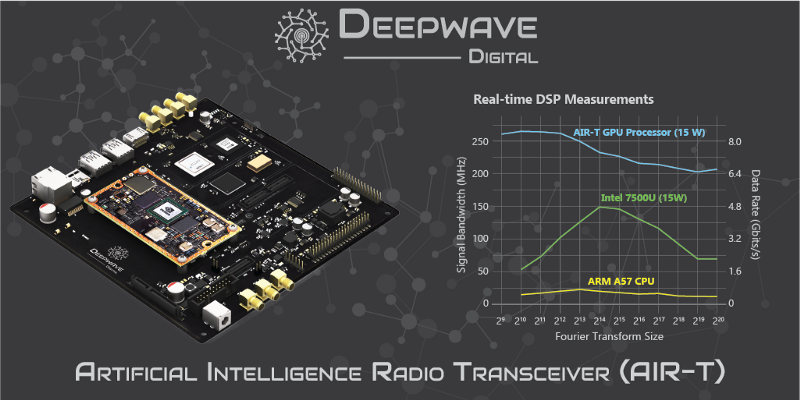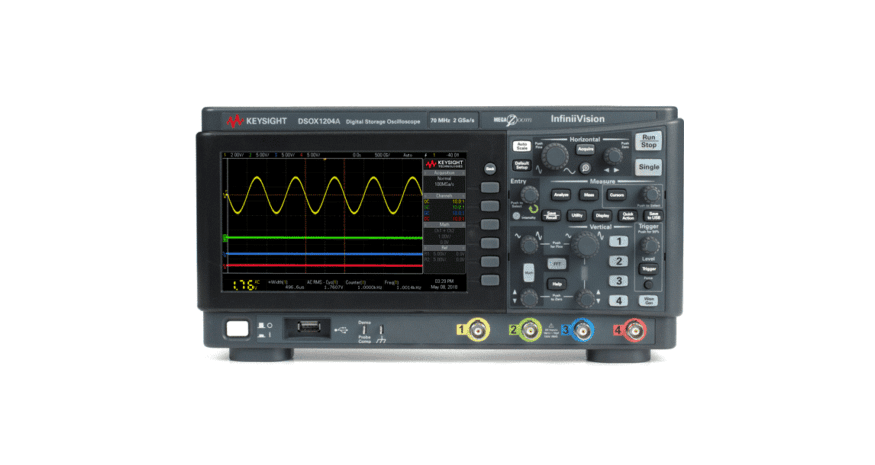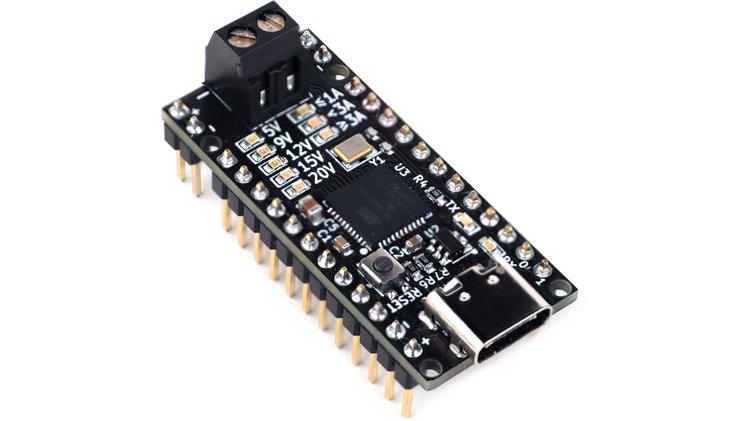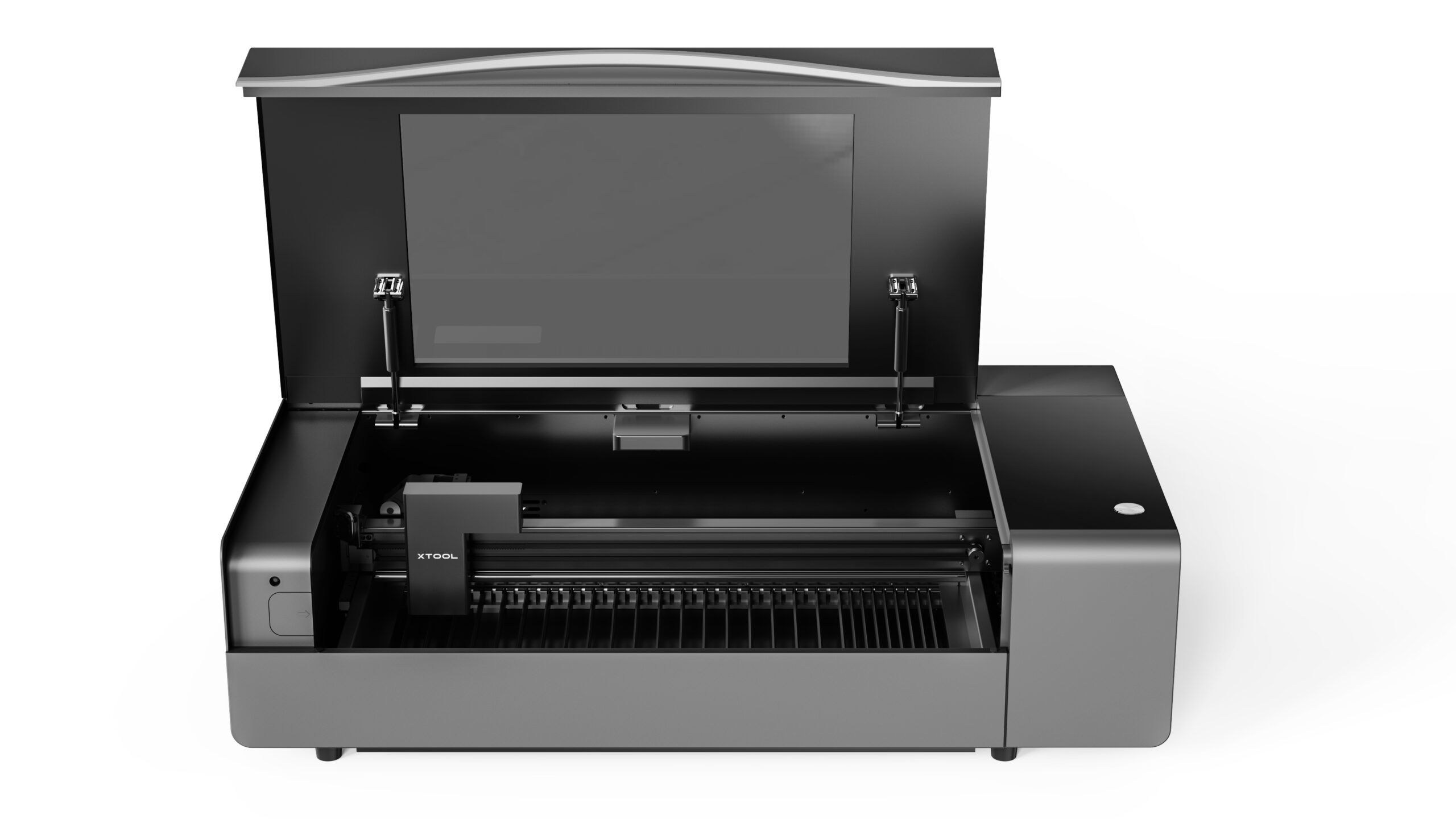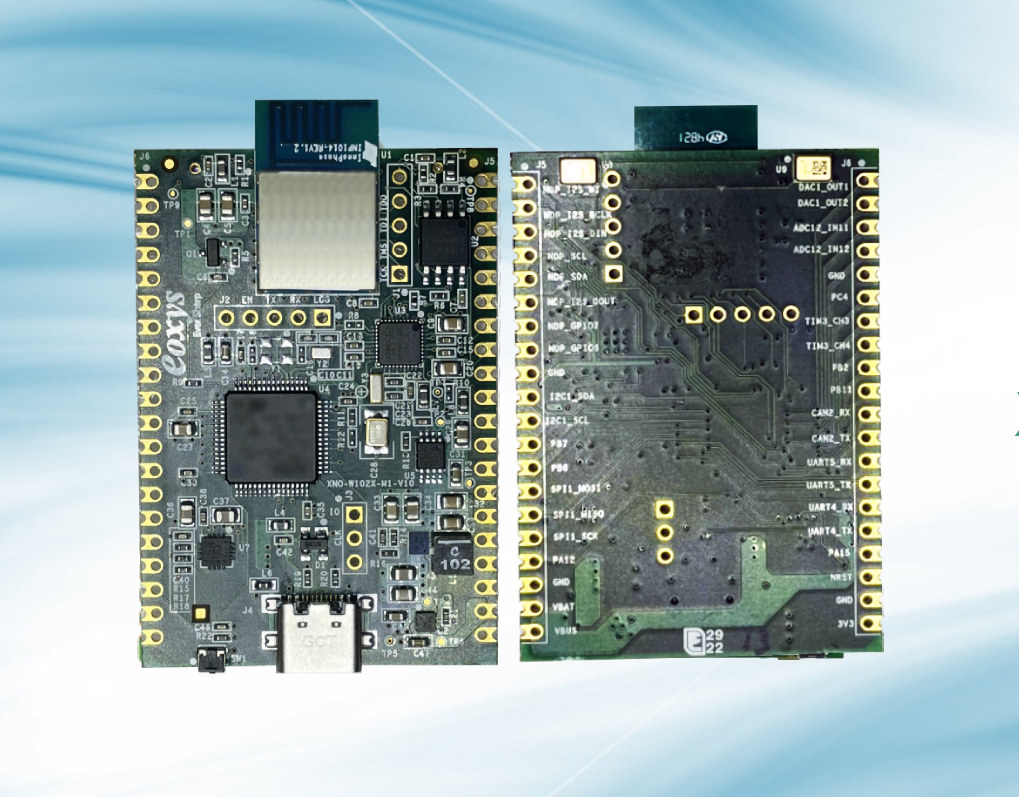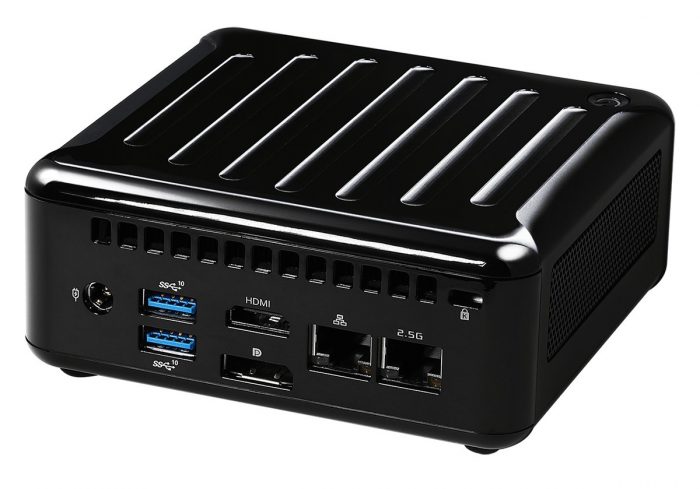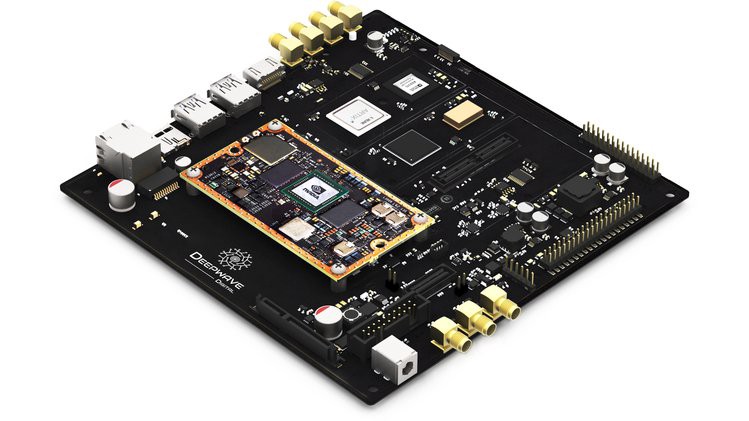
Artificial intelligence (AI) is an area of computer science that works towards creating machines that could make decisions, react, and interact just like a human would. To be considered AI a computer must be capable of recognizing speech, learn, plan, and solve problems. To do all this a computer must have a way to perceive the world and even interact with it (move). This type of technology has been used for personal assistants such as Siri and Alexa, for customer prediction (Netflix and Pandora), for autonomous vehicles, gaming etc. However, one application that has not been exploited is for signal processing.
Deepwave Digital decided to be pioneers in using AI for signals. The company created the AIR-T (Artificial Intelligence Radio Transceiver) which is a high-power SBC that uses NVIDIA Jetson TX2 for signal processing and deep learning applications.
Nowadays we deal with an increasing number of signals, because of Wi-Fi and cellular communications, and the technology is still human dependent to select the correct frequencies. Because of this, the need for an AI to do the work for us has become increasingly high, and as it turns out the AI can do the work better than us.
The AIR-T board also includes Xilinx Artix 7 FPGA and an Analog Devices 9371 MIMO transceiver with two RX channels of 100 MHz and a couple of TX channels of 250 MHz for connectivity, the device includes Bluetooth, Wi-Fi, HDMI, GPIO/UART, USB 2.0 and 3.0 etc. It uses Ubuntu 16.04, and it can be programmed using Python or C++.
All these characteristics make the device adaptable to many applications which will allow users to create and shape different projects. This project gives users the ability to adapt to software defined radio. Deepwave said:
This versatile system can function as a highly parallel SDR, data recorder, or inference engine for deep learning algorithms. The embedded GPU allows for SDR applications to process bandwidths greater than 200 MHz in real-time.
The device is not yet on sale, and Deepwave is expected to launch a crowdfunding to commercialize the product in the future, so there is still no information about price or sellers.
The idea is to redefine how signal processing is done using machine learning.





